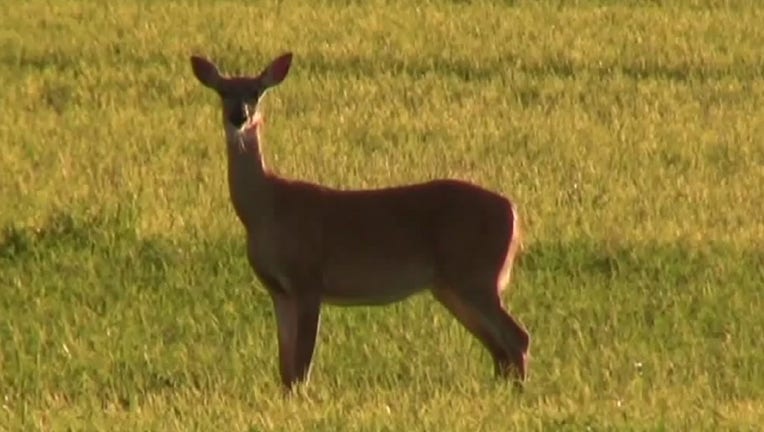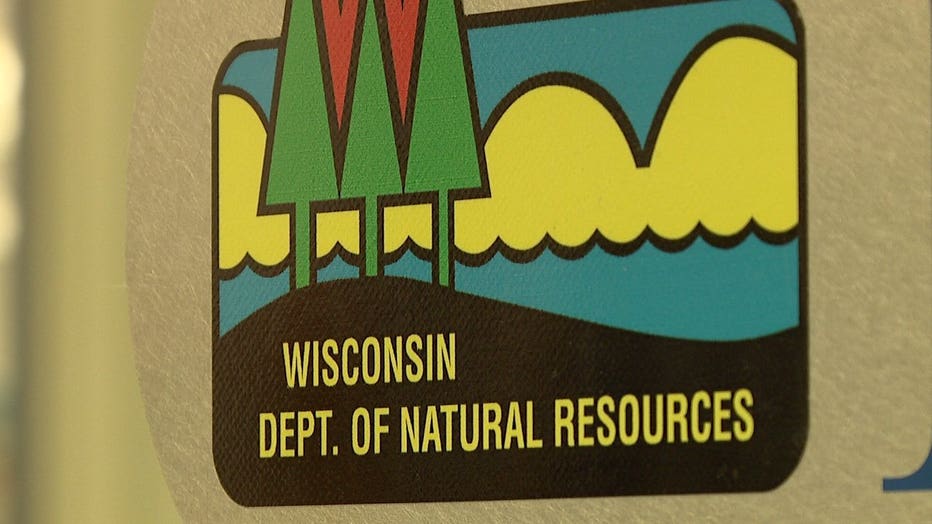Wisconsin deer hunt chronic wasting disease reminder: DNR

MILWAUKEE - The Wisconsin Department of Natural Resources (DNR) is asking deer hunters to join in efforts to protect the state’s deer herd, especially where chronic wasting disease (CWD) testing is most needed.
Wisconsin deer hunters play a crucial role in helping to control the spread of CWD, the DNR said. Each season, hunters who have their deer tested for CWD, properly dispose of deer carcass waste and follow baiting and feeding regulations help the DNR monitor the disease and slow its spread.
While planning to hunt, hunters are encouraged to check baiting and feeding restrictions in your county. Even where baiting and feeding are allowed, the DNR encourages hunters to reconsider using these practices to reduce the risk for disease transmission, which can spread through body fluids like feces, saliva, blood and urine. Large concentrations of animals in one area increase the risk of an infection spreading from between them.
SIGN UP TODAY: Get daily headlines, breaking news emails from FOX6 News
What is CWD?
CWD is a contagious neurological disease of deer, elk, moose and reindeer (caribou) caused by misshapen proteins that slowly degrade the central nervous system. The disease is always fatal and can have an incubation period of over a year, so infected deer can appear healthy for many months before showing clinical signs. In the clinical stage, CWD causes drastic weight loss, drooping of the head and ears, loss of coordination, excessive salivation and no fear of humans.
CWD is also referred to as "transmissible spongiform encephalopathy" or prion disease. The disease triggers normal proteins in a deer’s brain to fold abnormally, causing holes to form.
What to do
By having their deer tested, hunters provide the raw data needed to understand where CWD exists or doesn’t exist on the landscape. As part of an ongoing multi-year statewide sweep, the DNR especially encourages hunters in 17 counties of northeast Wisconsin to have their adult deer tested this year. In addition to the northeast part of the state, the department monitors several additional sampling areas where samples are needed. No matter where you hunt in the state, all hunters can have their deer tested for CWD.
There is a form in each hunter’s Go Wild harvest history to assist hunters with getting their deer tested for CWD after registering their harvest. The form automatically fills in name, contact information, customer ID number and harvest registration number.
FREE DOWNLOAD: Get breaking news alerts in the FOX6 News app for iOS or Android.
The online form also makes it easier to find the location the deer was harvested through an interactive map that allows the hunter to tap on the harvest location rather than writing out the county, town, range and section on the paper form.
The DNR offers four easy to submit a sample:
- Self-service kiosks where hunters can submit their deer’s head for testing
- A network of cooperating meat processors, taxidermists and other businesses who can assist with CWD sampling
- By-appointment sampling with your county wildlife biologist and
- Kits for hunters to extract lymph node tissue themselves to submit to the DNR for testing
Once hunters have finished processing their harvested deer, they can safely dispose of deer carcass waste in designated deer carcass dumpsters provided in conjunction with many partnering individuals and organizations around the state. Proper carcass disposal helps slow the spread of CWD by removing potentially infected deer carcasses from the landscape.

CWD testing, proper carcass disposal and following baiting and feeding regulations are three key ways to slow the spread. The DNR’s guide to slowing the spread of CWD provides even more ways hunters can help.
While there has not been a documented case of CWD in humans, the Wisconsin Department of Health Services (DHS), the Centers for Disease Control and World Health Organization recommend against consuming meat from CWD-infected deer. Because infected deer can look healthy, DHS encourages testing for the disease regardless of your harvested deer’s physical condition.
More information about how to prevent the spread of CWD is available on the DNR webpage.

Son, father reunite in Milwaukee after 35 years apart
Father and son Fausto and Jose Roque were separated in Mexico. After more than three decades, the two reunited in Milwaukee where the father now lives.
Featured
Wisconsin sheriff's badge from 1920s found during move
A moving company found a Fond du Lac County sheriff's badge from the 1920s while cleaning out an old Oshkosh bank.


